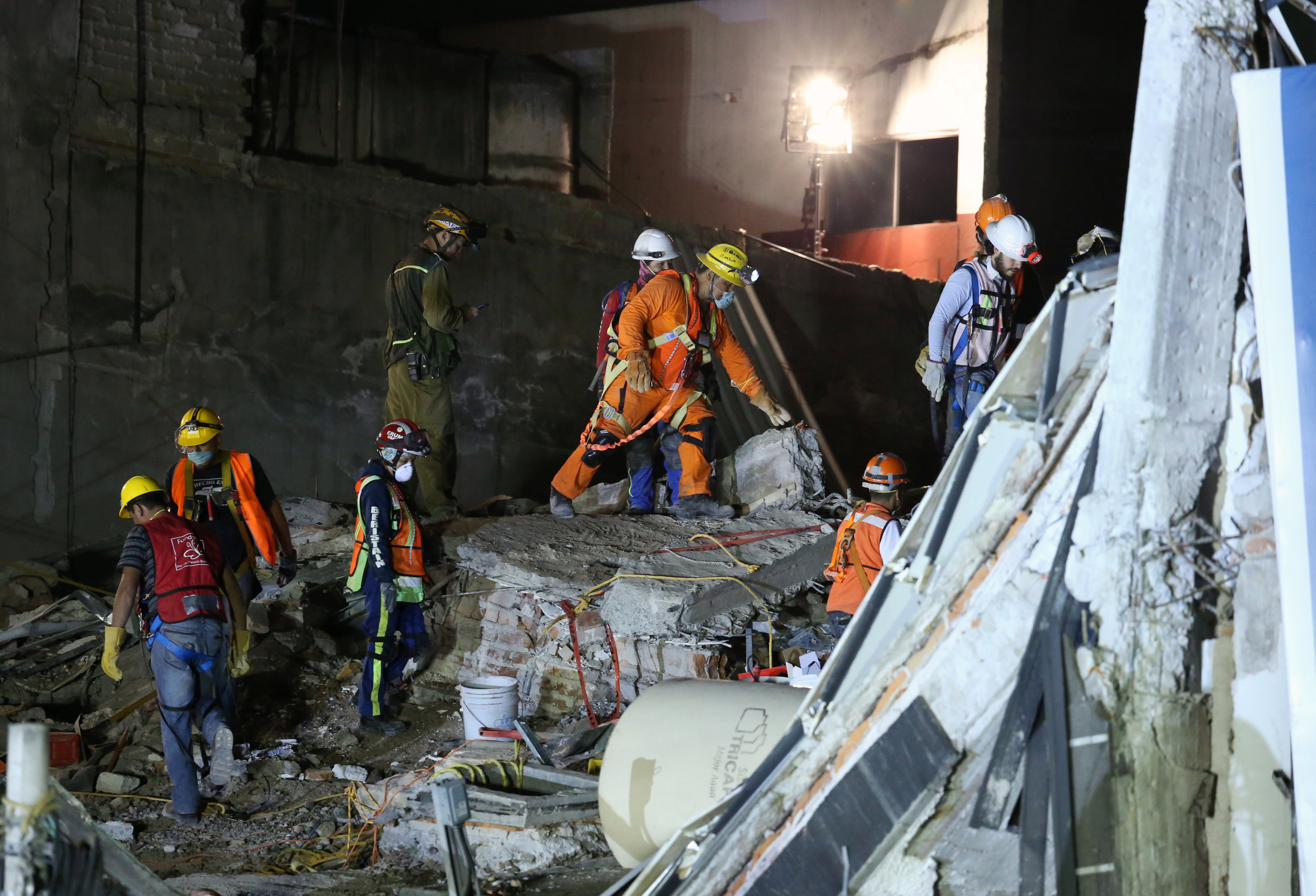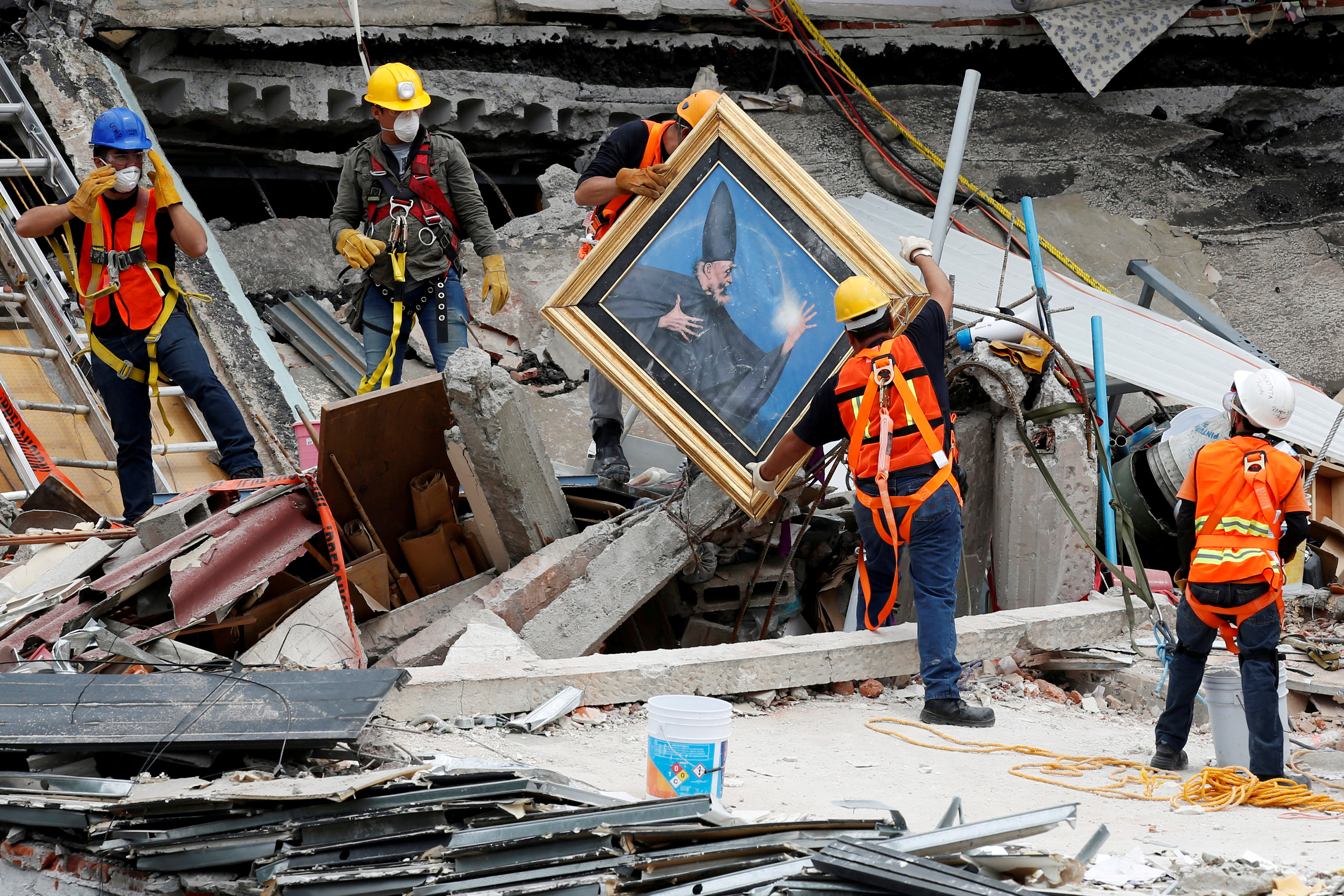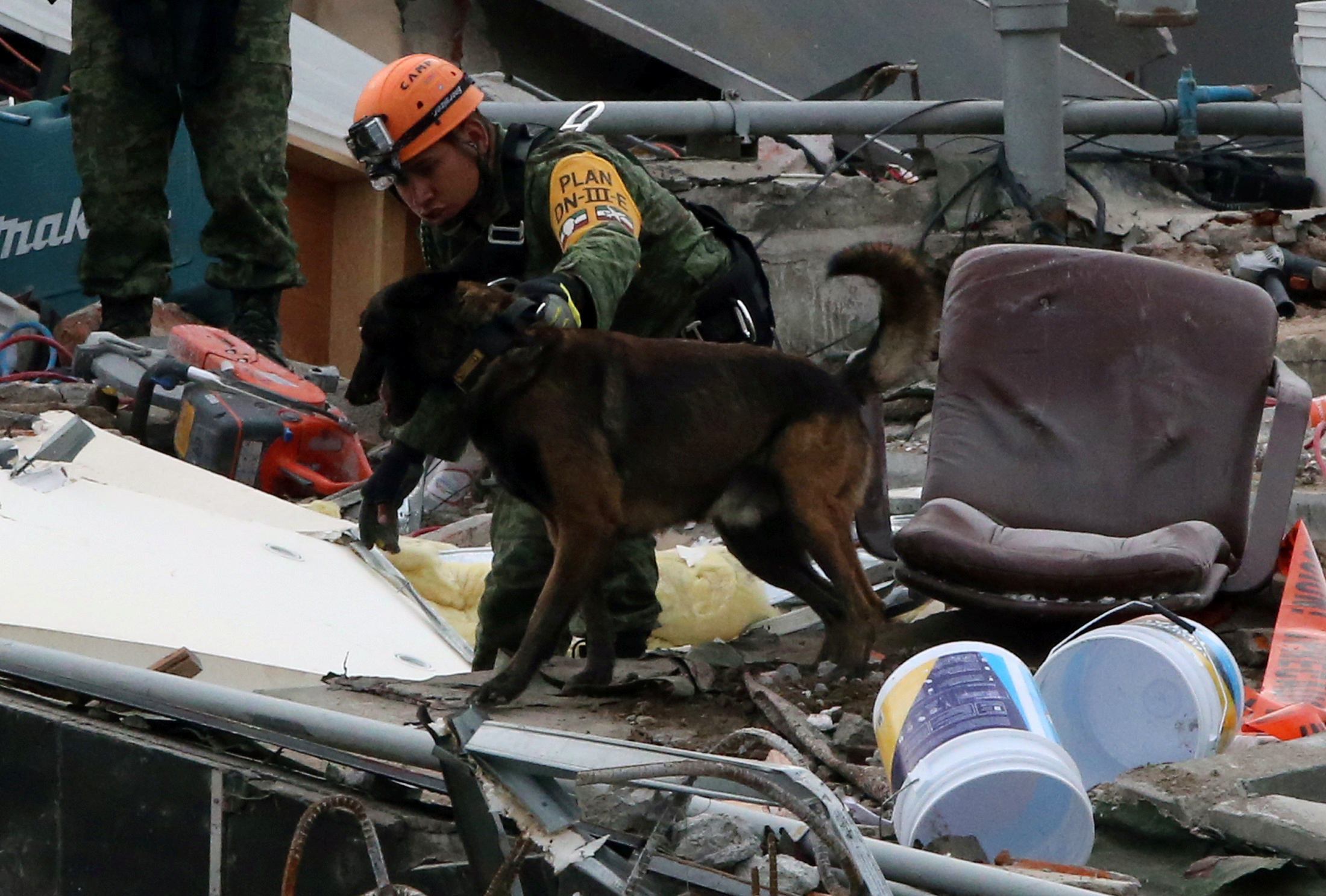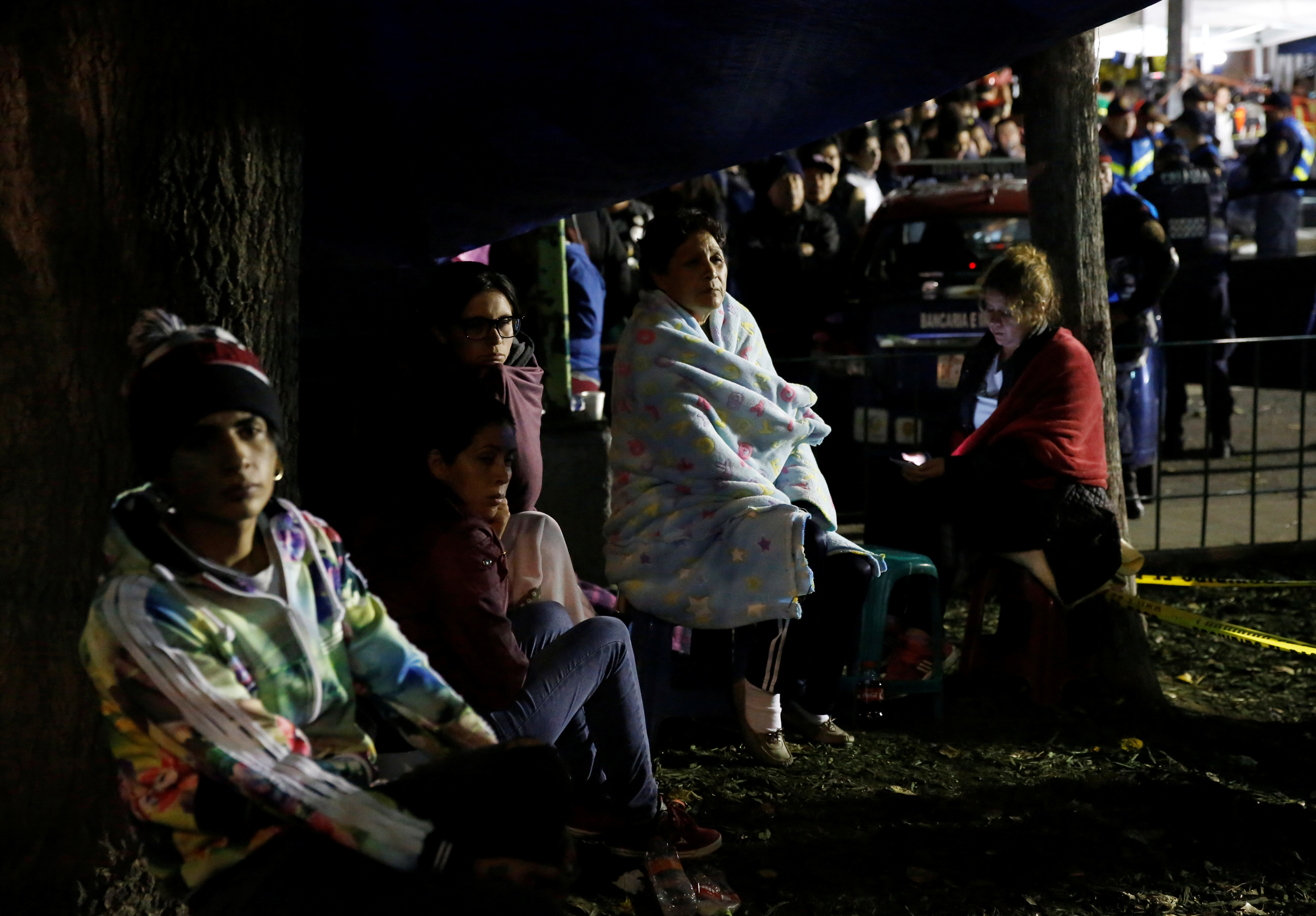
By David Alire Garcia
MEXICO CITY (Reuters) – Desperate residents left homeless by Mexico’s deadliest earthquake in a generation gathered in a tent village in the south of the capital on Friday, as the death toll climbed to 286 and signs of exhaustion gripped rescuers three days after the tremor.
Tuesday’s 7.1 magnitude quake leveled some 52 buildings in the sprawling Mexican capital, sparking a frenzied hunt for survivors and prompting political parties to outdo each other with pledges of donations to the rescue efforts ahead of next year’s election.
Across the city of 20 million people, the extent of damage from the quake was becoming apparent, with many people whose dwellings had become uninhabitable seeking somewhere to call home, raising the risk of a housing shortage in coming weeks.
Despite dimming hopes of finding more survivors, President Enrique Pena Nieto insisted rescue operations would continue.
Local media reported that military officials pulled two people from the wreckage of a textile factory in the central Colonia Obrera neighborhood of the capital late on Thursday, though it was not immediately clear if they survived.
In the Girasoles complex in the south of the city, officials cordoned off large areas of the development after two of its roughly 30 apartment buildings collapsed. A handwritten sign across the street listed 14 people said to have died there.
Anguished residents, who were given a series of 20-minute blocks of time to collect belongings from their apartments, feared their homes could be turned to rubble once inspectors have determined which buildings are safe and which may need to be demolished if they are a risk to public safety.
“The building is very, very damaged. It moves. Everything moves,” said Vladimir Estrada, a 39-year-old musical radio programmer, returning from a rushed trip to his fifth floor apartment with plastic bags stuffed with his belongings.
“Nobody here has insurance. Some have family members who can help them but others don’t. Everything is in doubt.”
Several removal vans were laden with mattresses and furniture as those who were able to leave packed up and did so.
But, with few places to go and concern for their largely uninsured properties, many chose to camp out, making the most of allotted windows of time to extricate their possessions. Others slept in their cars.
Emergency services worker Ana Karen Almanza was helping coordinate the arrival of donated supplies in the park, where about a dozen tarp awnings had been erected. She said there was no official involvement in the tent village emerging around her.
“It’s the residents, the neighbors,” she said. “Lots of them don’t have anywhere to live.”

A man looks at the remains of his home after an earthquake in Jojutla de Juarez, Mexico September 21, 2017. REUTERS/Edgard Garrido
DISCONTENT
Tuesday’s massive quake struck on the anniversary of the deadly 1985 tremor that killed some 5,000 people in Mexico City, spooking many residents. As the shock began to subside, exhaustion crept in, along with growing discontent and swirling speculation.
Late on Thursday, Mexico’s Navy apologized for communicating incorrect information in the story a fictitious schoolgirl, supposedly trapped under a collapsed school in Mexico City.
The tale of the girl, dubbed Frida Sofia by local media, had captivated a devastated nation, and the high-profile televised blunder led to anger.
Officials also sought to quash rumors that the military would be bulldozing razed buildings deemed unlikely to harbor survivors. Across the city, thousands of rescue workers and special teams using sniffer dogs continued to comb the wreckage of buildings for survivors.
With signs of tensions bubbling under the surface, the country’s deeply unpopular political class strove to shine.
Disaster relief is sensitive for politicians in Mexico after the government’s widely panned response to the 1985 quake caused upheaval, which some credited with weakening the one-party rule of the Institutional Revolutionary Party (PRI).
In a statement, the PRI said it would be donating 258 million pesos ($14.42 million), or 25 percent of its annual federal funding, to help those afflicted.
Meanwhile, the national human rights commission proposed changing the Mexican constitution to divert about 30 percent of political parties’ funding to a federal disaster fund.
Calls for political penny-pinching gained momentum on social media following a powerful quake two weeks ago that killed nearly 100 people in the south of the country.
After that temblor, current leftist presidential frontrunner Andres Manuel Lopez Obrador suggested donating 20 percent of his party’s federal campaign funds for victims.
On Thursday, though, after news of the PRI plans broke, Lopez Obrador upped the ante, proposing donating 50 percent of his National Regeneration Movement (MORENA) party’s 2018 federal funding to support victims.
Lorenzo Cordova, the head of the national electoral institute, said in a video posted to Twitter the body had no problem with parties choosing to divert funds to the needy.
The full scale of damage has not been officially calculated.
Citigroup’s Mexican unit Citibanamex told clients it was lowering its 2017 economic growth forecast to 1.9 percent from 2.0 percent due to the earthquake.
(Reporting by David Alire Garcia; Writing by Gabriel Stargardter and Daniel Flynn; Editing by Frank Jack Daniel, Jeremy Gaunt and Bernadette Baum)























